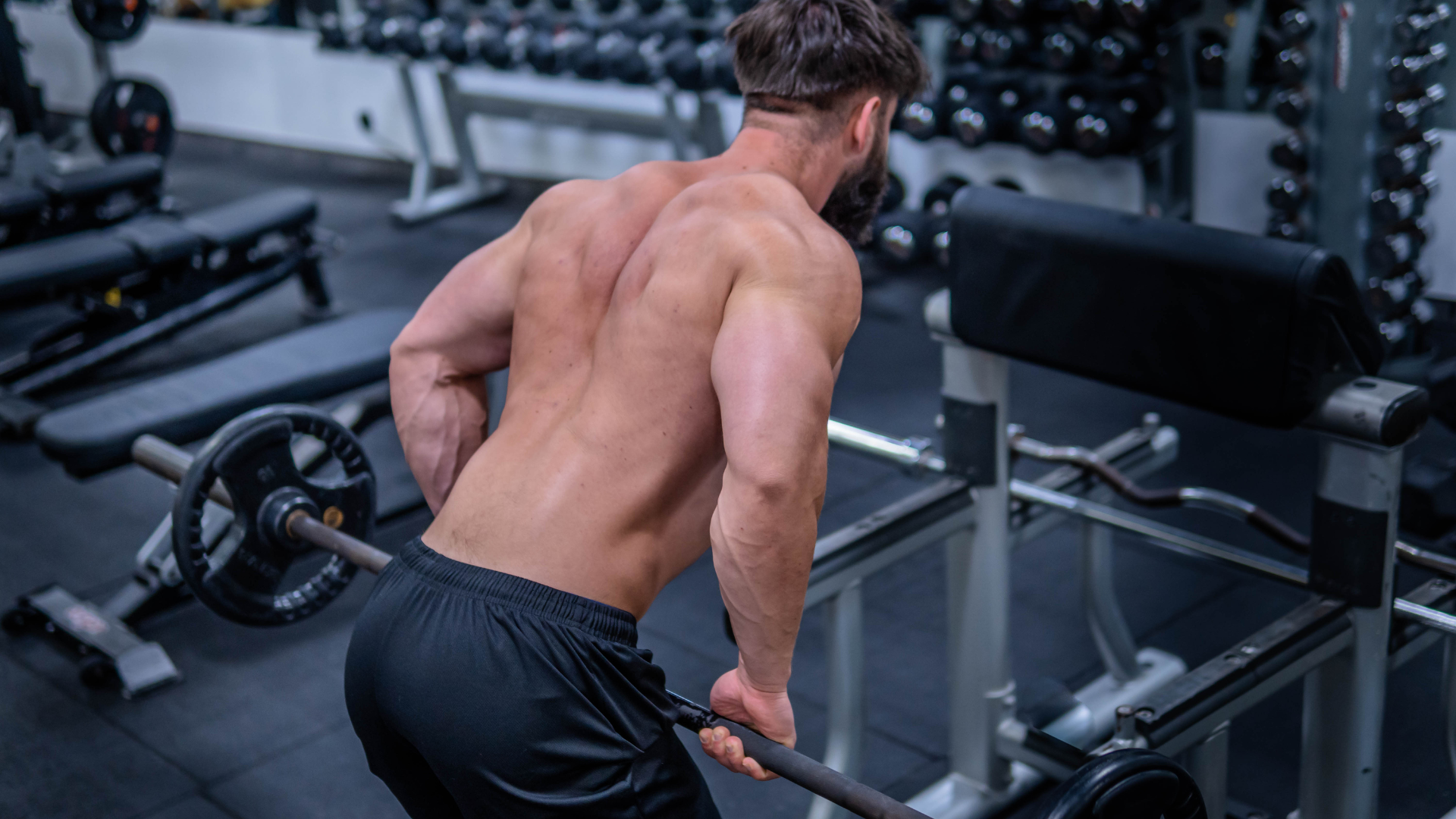

If you want a bigger, stronger back, you need to row to grow. The bent-over barbell row, dumbbell row and seated row are the most popular variations you’ll see people doing in the gym. However, one variation that can often go amiss is the seal row.
The seal row is where you lie parallel to the floor on an elevated weight bench with a barbell placed directly beneath you, which you then proceed to row towards your chest. It’s called a seal row because some people lift their feet up and down like a seal when performing the lift (although this should really be kept to a minimum).
It’s a great alternative if you get discomfort in your lower back doing other row variations and it stops your body from swinging around to help you complete a better quality lift, meaning more gains. A barbell isn’t essential either, a pair of dumbbells or two kettlebells work just as well for this exercise, just elevate a weight bench by placing two large weight plates underneath.
Here’s five reasons why you should add it into your training…
1. It’s easier on the lower back
If you find you get discomfort in your lower back when you perform bent-over rows, then the seal row could be the alternative you need. By supporting your bodyweight on a weight bench your lower back is taken out of the equation, putting all the focus onto your upper back and lats instead.
2. It can help your big compound lifts
Keeping a neutral spine during heavy lifts, such as the squat and deadlift, is important to decrease your risk of injury, and your upper back is key for this. With the deadlift, your upper back helps keep the bar close to your body, while with the squat your upper back not only helps balance the bar, but maintain good posture throughout the lift. Even with your bench press, the upper back helps to stabilise you and maintain a strong position.
3. It limits momentum
You’ve probably seen that person who swings their entire body to row the barbell towards their torso. While that may help move more weight it can also A) lead to an injury (as form is possibly going out the window at this point) and B) take the focus away from the primary muscles being used. However, as we mentioned previously, by lying on a weight bench during the seal row, all the attention is turned to your upper back muscles, preventing momentum from other muscles (such as your legs and hips).
Sign up to the T3 newsletter for smarter living straight to your inbox
Get all the latest news, reviews, deals and buying guides on gorgeous tech, home and active products from the T3 experts
4. Better mind-muscle connection
With your lower back and legs out of the equation, the seal row provides the perfect opportunity for some decent mind muscle connection. It allows you to really focus your attention to the upper back and lats during the concentric portion of the lift, with studies showing that this can increase hypertrophy.
5. You can push harder on other lifts
As the seal row saves your lower back and legs your body will end up being less fatigued. This means you can push even harder on other big lifts that you may have coming up, like your squat and deadlift, and put maximum effort into your leg training.

Bryony’s T3’s official ‘gym-bunny’ and Active Staff Writer, covering all things fitness. She recently completed her Level 3 PT qualification with the PFCA to bring a deeper understanding of training techniques, fitness trends, and wellness advice to her writing. In her spare time, you will find her in her natural habitat - the gym - where her style of training is a hybrid of bodybuilding and powerlifting. Bryony loves writing about accessible workouts, nutrition and testing innovative fitness products that help you reach your fitness goals and take your training to the next level.
-
 Leaked AirPods prototype looks like Nothing... literally
Leaked AirPods prototype looks like Nothing... literallyAnd we are here for them
By Britta O'Boyle Published
-
 OnePlus Watch 3 lands in the UK with a flurry of freebies and a huge discount
OnePlus Watch 3 lands in the UK with a flurry of freebies and a huge discountThe new titanium-clad smartwatch brings 120-hour battery life, ECG health checks, and some serious launch offers
By Matt Kollat Published